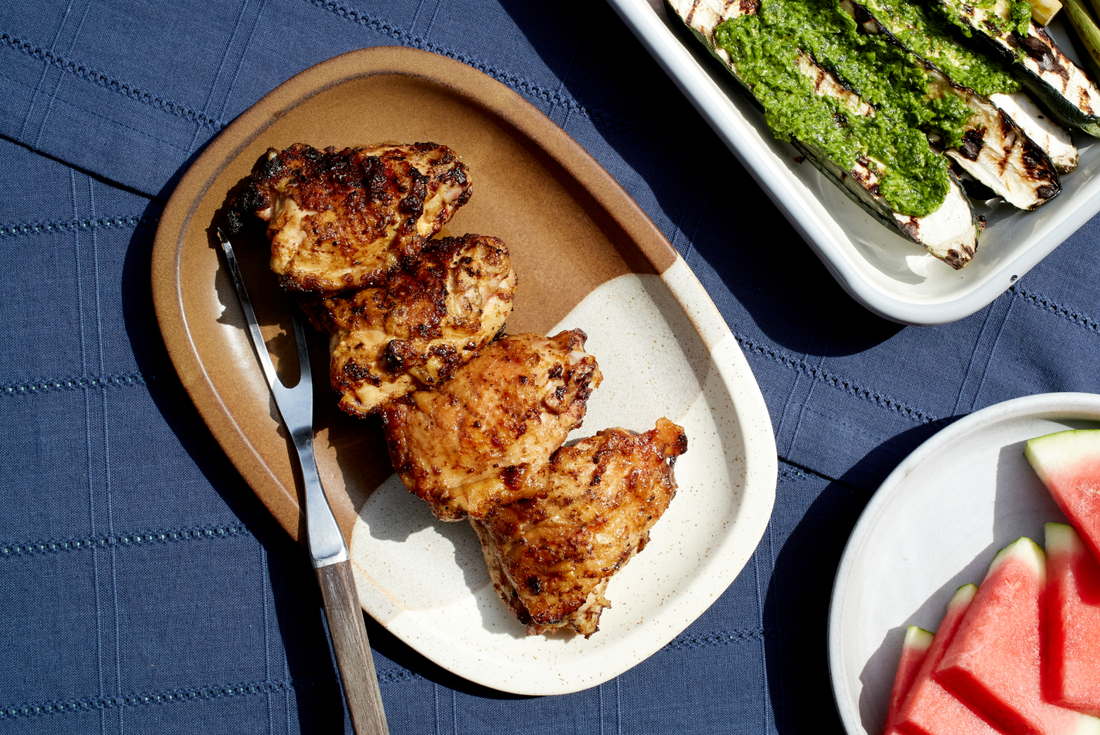
Grilled Chicken with Alabama White Sauce
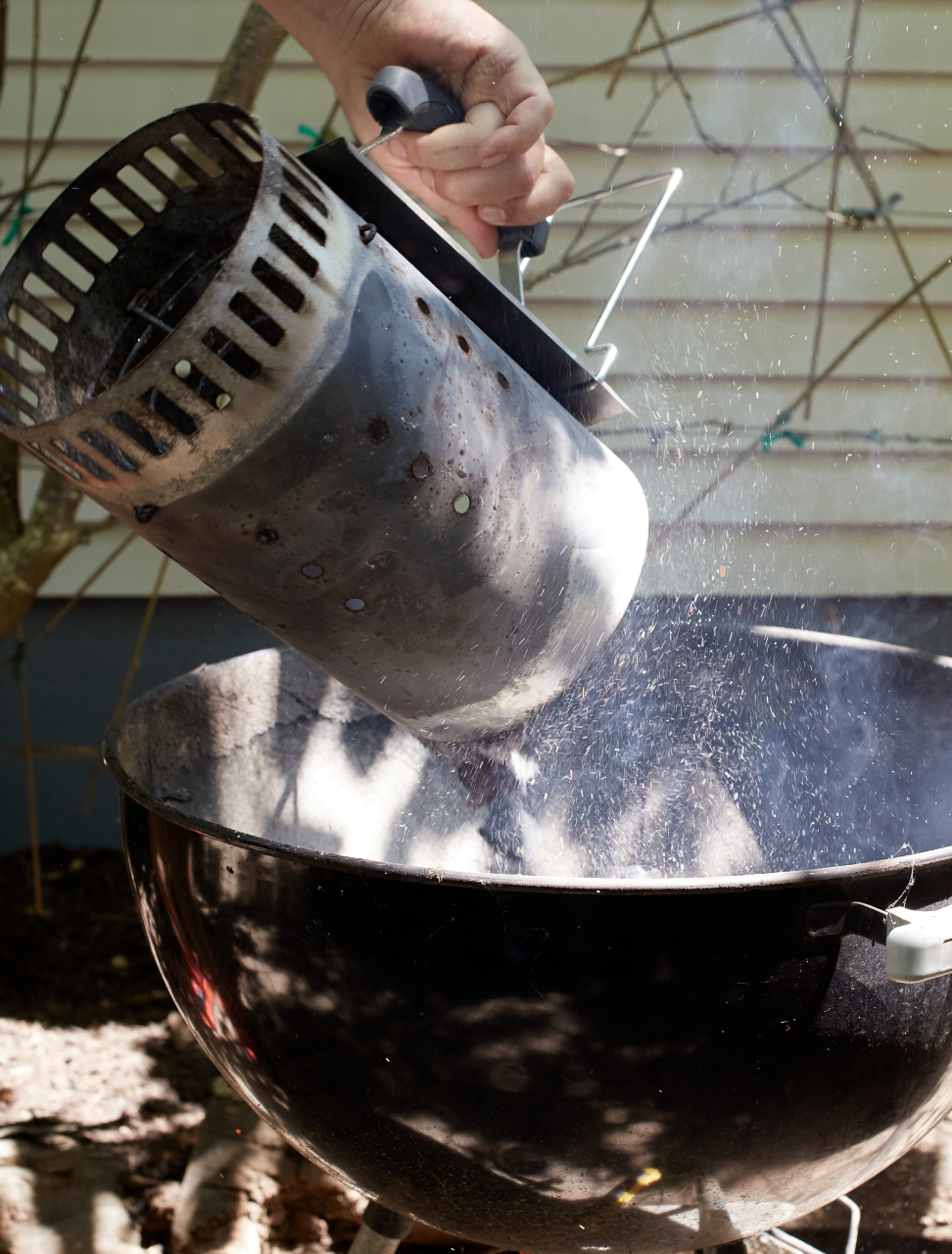
Alabama pitmaster Big Bob Gibson gets credit for creating this mayonnaise-based sauce at his barbeque restaurant in Decatur in 1925.
The origin story’s a little murky, but those close to Gibson say he used the sauce to keep the whole chickens from getting too dry during the 3 hours they spent on Bob’s pit. Mop sauces for basting barbecue are usually just vinegar or water with salt and other flavors. The sugars in tomato-based sauces tend to burn, and any fat in the mop drips onto the coals and flares up, dusting the meat with soot. But the fatty mayo clings, and as it cooks it creates a tangy, caramelized crust that holds the juices in.
The basic sauce is just mayonnaise, vinegar, lemon juice, and black pepper. But it’s evolved over the years with more added flavors. Our version, inspired by Nashville chef and author Edward Lee, includes garlic, mustard, worcestershire sauce, smoked paprika, and horseradish. The recipe makes enough to cook at least a half dozen pieces of chicken, but it’s just as good on grilled vegetables, and you’ll want extra for the table. It makes a great salad dressing, too, so double it and keep some in the refrigerator.
What You'll Need
Ingredients
- 6 bone-in, skin-on chicken thighs (legs and breasts work, too)
- 3 cloves of garlic, chopped*
- 2 tablespoons of fresh horseradish, grated*
- 2 teaspoons of Worcestershire Sauce
- 1 tablespoon of black pepper, freshly ground
- *Substitute 1 teaspoon Burlap & Barrel purple stripe garlic powder for the fresh garlic, 1 tablespoon prepared horseradish instead of fresh horseradish
- 1 cup Duke's Mayonnaise
- 1/4 cup of Gravenstein Apple Cider Vinegar
- 1 tablespoon of Bornibus Whole Grain Mustard
- 1/2 teaspoon of Burlap & Barrel Silk Chili
- 1 teaspoon of Kosher Sea Salt
Equipment
- 1 Grill
- 1 Basting Brush
- 1 Small Mixing Bowl
- 1 Cheese grater
- Tongs
- Measuring Spoons
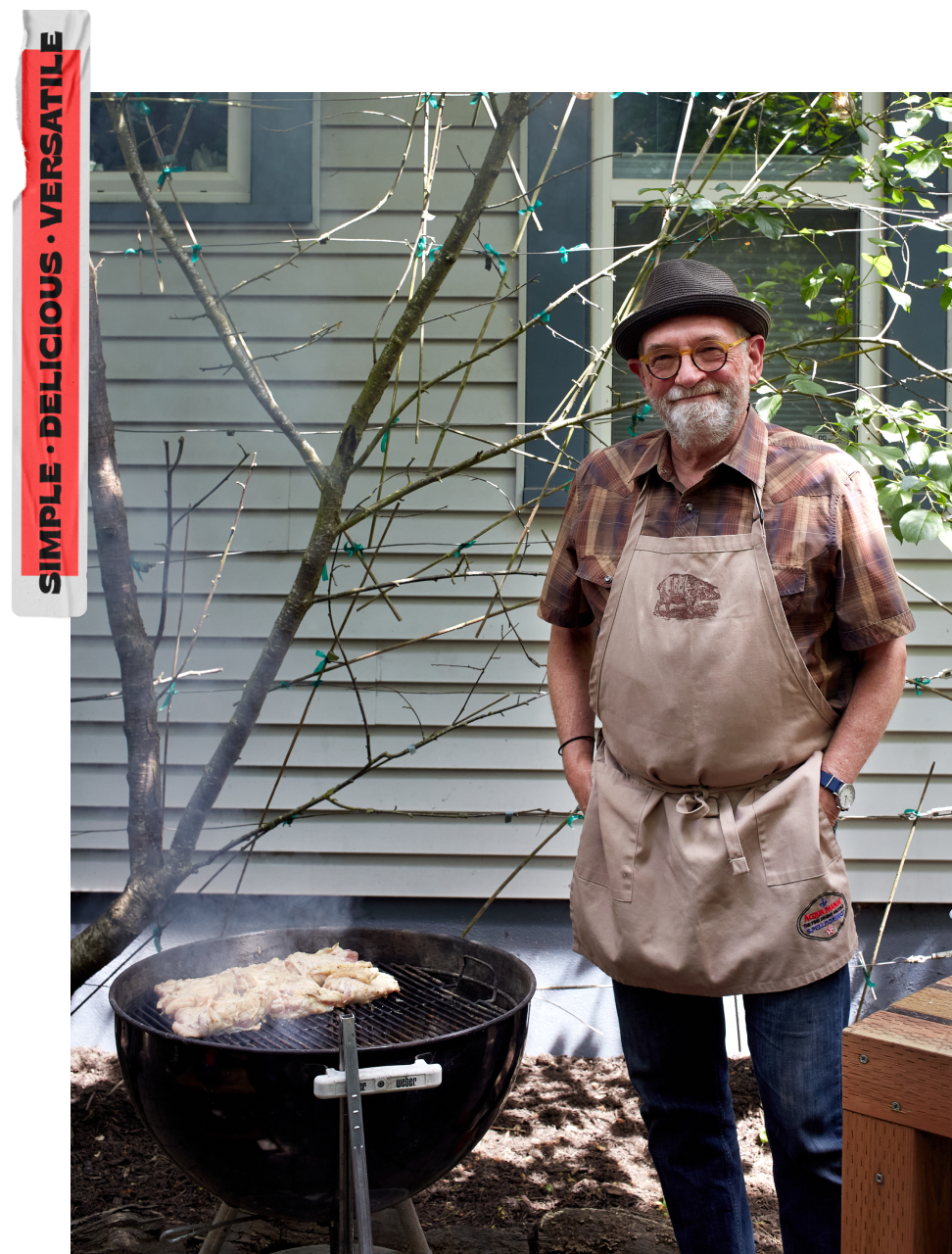
"Does mayo solve everything? Maybe not, but it definitely makes grilled chicken better."
~ Jim Dixon, founder Wellspent and Real Good Food
What you'll have to do
Step 1
Set up your grill with direct and indirect heat zones.
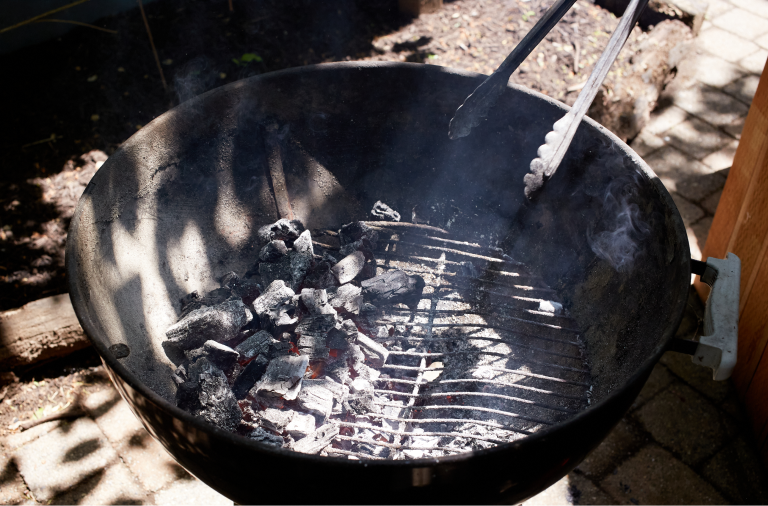
Step 2
Combine all ingredients (except the chicken) in a bowl and mix well.
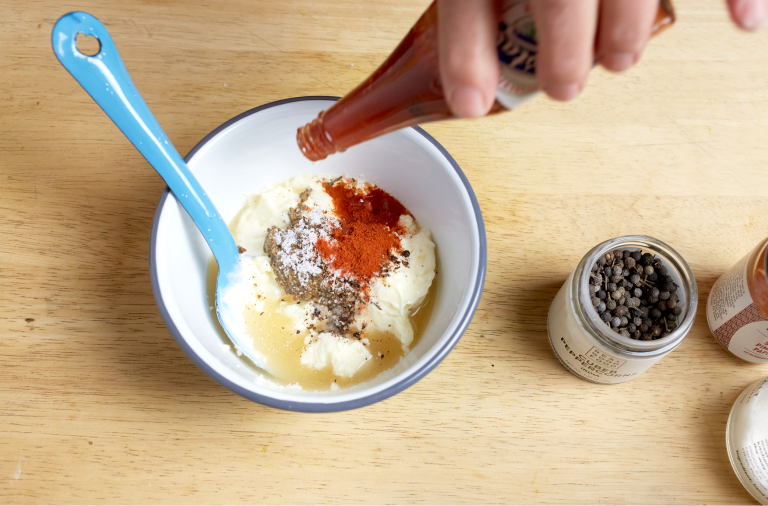
Step 3
When your grill is ready, place the chicken thighs skin side up on the grate directly over the heat. Brush the tops with the sauce, and after about 5 minutes turn them over and brush the undersides. Turn the chicken pieces every 5 minutes or so, brushing with more sauce each time.
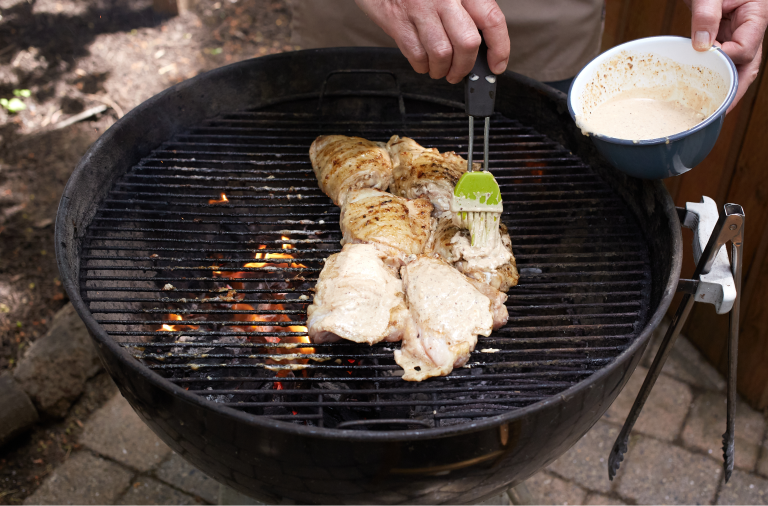
Step 4
When both sides are nicely browned, move the chicken to the indirect heat zone. Cover the grill (or tent the chicken with a piece of foil), and cook for another 10-15 minutes. If desired, add wood chunks to the fire for a little smoky flavor.
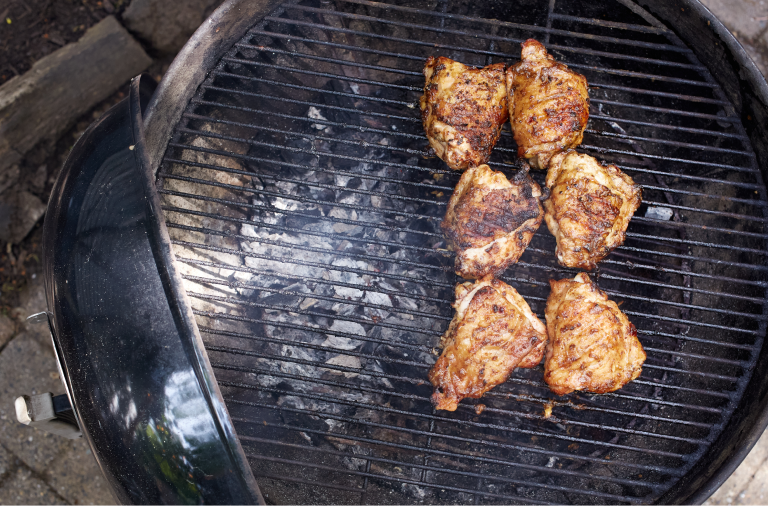
Shop this recipe
Example product title
Example product title
Example product title
Example product title
Example product title
More recipes
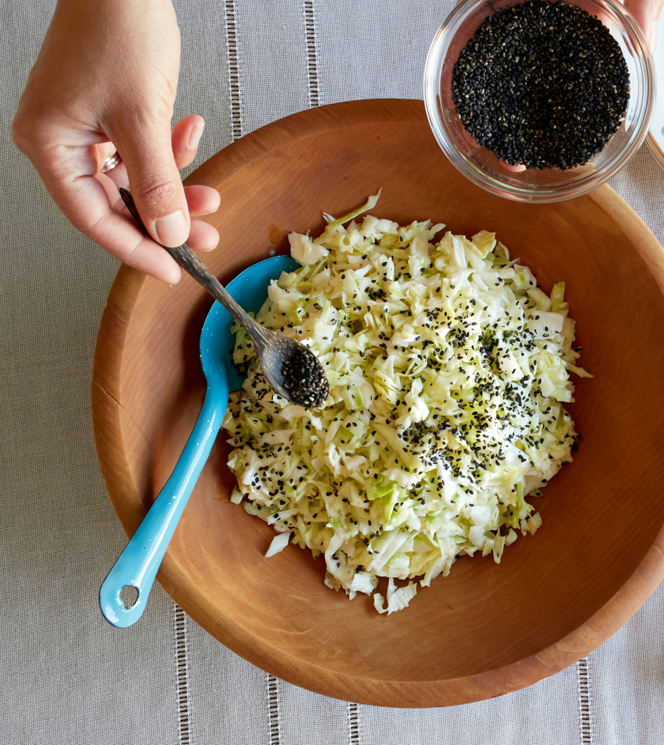
Semi-Creamy Coleslaw
Our simple, semi-creamy coleslaw works for both sides of the mayo divide.
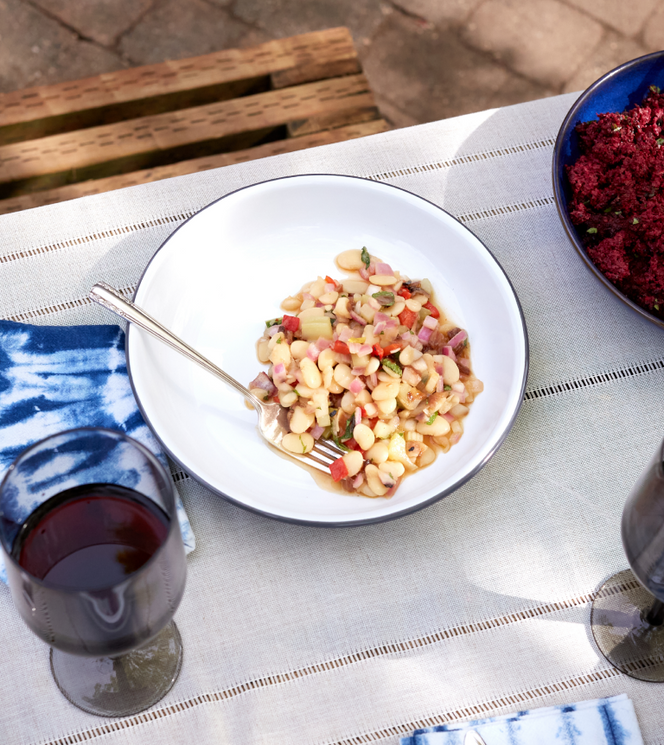
Picnic Limas
Take these sweet and tangy baby lima beans on your next picnic, even if it’s inside at your kitchen table.
